#taharqa
Explore tagged Tumblr posts
Photo

Colosse de Taharqa, pharaon des deux terres, Napata.
#colosse#pharaon#deux terres#taharqa#africa#afrique#sud de l'egypte#pharaoh#roi#king#amon#nil#nile#égyptologie#egyptology#louvre
6 notes
·
View notes
Text

"The Order of Ancients will remember me as the bringer of waters and a builder of cities!"
#reblog to slap his bald head#my art#i am so obsessed with this c-tier side plot villain its not even funny. he should have held so much more weight in the plot imo#taharqa#the scarab#assassins creed origins#ac origins#ac origins fanart#assassins creed#assassins creed fanart#fanart
93 notes
·
View notes
Text

Juliette Agnel, Taharqa et la nuit 6 (2019)
from here
28 notes
·
View notes
Text
The Best 21 Ancient Egyptian Leaders
The Best 21 Ancient Egyptian Leaders
Ancient Egypt was home to many influential leaders who shaped its history, culture, and society. Here is a list of 21 prominent ancient Egyptian leaders, including pharaohs, queens, and notable figures:
Narmer (Menes) - Often considered the first pharaoh of unified Egypt, he is credited with uniting Upper and Lower Egypt around 3100 BCE.
Djoser - The pharaoh of the Third Dynasty, he is best known for commissioning the Step Pyramid at Saqqara, which is one of the earliest monumental stone buildings.
Sneferu - Founder of the Fourth Dynasty, he is recognized for his contributions to pyramid construction, including the Bent Pyramid and the Red Pyramid.
Khufu (Cheops) - The Egyptian pharaoh responsible for the Great Pyramid of Giza, one of the Seven Wonders of the Ancient World.
Hatshepsut - One of the few female pharaohs, she ruled in the 15th century BCE and is known for her prosperous reign and impressive architectural projects, including her mortuary temple at Deir el-Bahari.
Thutmose III - Often called the "Napoleon of Egypt," he was a military genius who expanded Egypt's empire to its greatest territorial extent in the 15th century BCE.
Amenhotep III - A pharaoh of the 18th Dynasty known for his diplomatic relations, monumental building projects, and for being a patron of the arts.
Akhenaten (Amenhotep IV) - A revolutionary pharaoh known for introducing monotheism with the worship of Aten, the sun disk, and for moving the capital to Akhetaten (modern Amarna).
Nefertiti - The Great Royal Wife of Akhenaten, she is renowned for her beauty, and her bust, found at Amarna, has become an iconic symbol of ancient Egypt.
Tutankhamun - The young pharaoh who is famous for his nearly intact tomb discovered in the Valley of the Kings, which provided extensive treasures and insights into ancient Egyptian culture.
Ramses II (Ramses the Great) - One of Egypt's most powerful and celebrated pharaohs, he is known for numerous military victories, monumental constructions, and an exceptionally long reign.
Cleopatra VII - The last active ruler of the Ptolemaic Kingdom, she is famous for her intelligence, political acumen, and relationships with Julius Caesar and Mark Antony.
Seti I - A pharaoh of the 19th Dynasty known for his military campaigns and the construction of many impressive temples, including the Seti I Temple at Abydos.
Ramses III - The last great pharaoh of the New Kingdom, he is noted for defending Egypt against invaders like the Sea Peoples and for his extensive building projects.
Merneptah - The son of Ramses II, he is known for his military campaigns against the Libyans and for the Merneptah Stele, which contains the earliest known reference to Israel.
Siptah - A lesser-known pharaoh of the late 19th Dynasty, he faced significant challenges during his reign but is notable for his unique tomb.
Psusennes I - A pharaoh of the 21st Dynasty whose well-preserved tomb was discovered, showcasing wealth and art of the period.
Sheshonq I (Shishak) - Founder of the 22nd Dynasty, he is known for his military campaigns in the Levant and the biblical account of his attack on Jerusalem.
Taharqa - A ruler of the 25th Dynasty (Nubian dynasty), he is known for his significant building projects and for successfully defending Egypt against Assyrian invasions.
Horemheb - An important pharaoh of the late 18th Dynasty, he is recognized for his military prowess and efforts to restore order after the tumultuous Amarna period.
Ptolemy I Soter - The founder of the Ptolemaic Kingdom after the death of Alexander the Great, he established a dynasty that blended Greek and Egyptian culture.
0 notes
Text
Taharqa Invades Spain

The young Prince Taharqa of Kush, fated to become king of an empire that spreads from his homeland in Sudanese Nubia all the way down to the Nile Delta, leads an invasion of southern Spain circa 700 BC. This is of course another alternate history scenario, but the inspiration came from a handful of apocryphal accounts from historians such as Strabo and Ahmed ibn Mohammed al-Makhari that report that he ventured to the “pillars of Heracles” (the Gibraltar Strait between Spain and Morocco) and led an expedition into Spain. Archaeological evidence of such Kushite forays remains undiscovered, but considering that the Phoenicians from Lebanon had already established trading posts on the Spanish coast as far afield as modern Cadiz by that time, an army from the Nile Valley making it there is not totally impossible. Who knows, maybe Taharqa and his soldiers here are defending one of the Phoenician settlements from hostile local tribes?
#Taharqa#nubian#kushite#25th dynasty of Egypt#sudanese#african#black men#dark skin#spain#spanish#iberian#ancient#battle#alternate history#digital art#art
1 note
·
View note
Photo
Detalhe do faraó egípcio Taharqa da 25ª dinastia
Praça Veneza, Trieste, Itália

Detail of the Egyptian Pharoah Taharqa of the 25th dynasty Piazza Venezia, Trieste, Italy
8K notes
·
View notes
Text

Relief of Mentuemhat as Priest with Staff and Scepter
Mentuemhat in his robes as a priest of Amun and carrying the wand used to consecrate food offerings to the god. Raised relief in the style of his time, but showing some influence of Middle Kingdom work.
Mentuemhat’s power over Thebes likely is what inspired him to portray himself as a king in his statuary, like he was king of Egypt—and in the case of Upper Egypt, he de facto was.
Montuemhat’s father Nesptah passed on the position of Mayor of Thebes to his nephew Remmakheru and later to Mentuemhat himself. He served during the reigns of Taharqa and Psamtik I, which cover parts of the 25th Dynasty of Egypt and 26th Dynasty of Egypt.
Late Period, 26th Dynasty, ca. 664-525 BC. Tomb of Mentuemhat (TT34), El-Assasif, Thebes. Cleveland Museum of Art. 1949.492
Read more
26 notes
·
View notes
Text
Pharaoh Taharqa happens to be another case of the early intersections of Jewish and Black history:
Ironically posterity would make Taharqa one of many cases of a Pharaoh whose reign wound up caught up in the discussions of Biblical historicity, in the proof of the existence of King Hezekiah of Judah/Yehudah/Yahud, fighting against both Sennacherib, who besieged Judah and helping to relieve the Israelite Kingdom, and then getting driven back into Kush by Sennecharib's successor as Emperor of Assyria, Esarhaddon.
Taharqa would have seen this as one of many battles and campaigns in a long career that brought the Kushite dynasty to its furthest reaches, Hezekiah and his Edomite counterpart as tribute-paying subordinates to him after he liberated them, and his career as predominantly directed against Assyria much as the most powerful Pharaohs fought the Hittites and the Mitanni.
Taharqa also makes the same point that would recur in other points, that rulers of Africa did have the power to push into Asia and Europe where geography permitted. It was not just the Amazigh or the Khemetic peoples who did this, where it was possible, the rulers of Black Africa did so and did so unapologetically like everyone else did.
Unfortunately geography meant that it was much harder to push up north against the weight of world states like Assyria, Rome, or the original Caliphates (not so much against the fragmented successors or the smaller state orders that were much more vulnerable).
#lightdancer comments on history#black history month#military history#kushite dynasty#pharaoh taharqa#jewish history#israelite history#kingdom of judah#assyrian history#'the assyrian came down like the wolf upon the fold'
1 note
·
View note
Text
Gallery Collection 001

Published: 2-21-2024 | Updated: N/A SUMMARY This is the first in a series of upcoming investment objects for Sims 2 – things your sims can use to generate income over time. From 1975-2000, Anheuser-Busch, Inc. commissioned 30 paintings of African kings and queens for an extended outreach and marketing campaign. This set of paintings features artwork from this amazing series. Celebrate Black History Month 2024! #co2bhm #bhm2024 #sims2bhm. *No copyright infringement intended – I own no rights to these images.
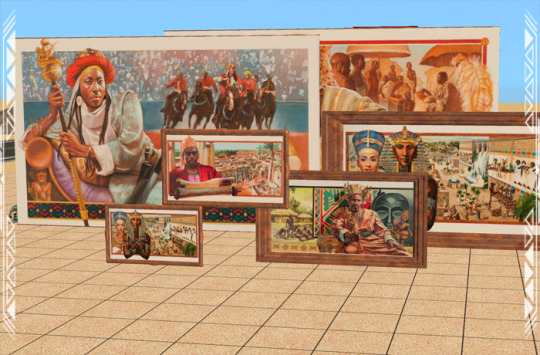
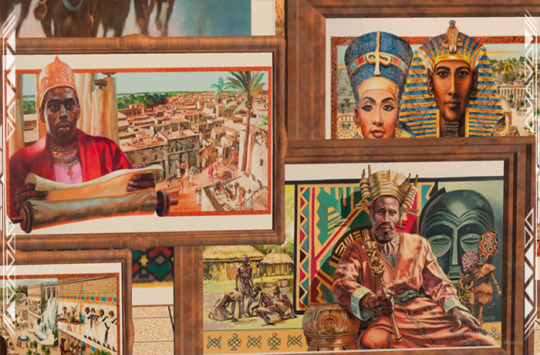
DETAILS Requires Sims 2. Requires Apartment Life for shiftability. §1K-15K | Buy > Deco > Wall Hangings Paintings are centered on 1-tile but cover more tiles than that. They come in various gallery sizes and images have been edited to fit the mesh. After purchase, their value increases by approximately 2% daily – watch out for burglars! Files with “MESH” in their name are REQUIRED. Frame recolors include EA/Maxis and yeti textures. Frame and painting recolors are merged into two files so you’ll have to take them or leave them. ITEMS Great Kings & Queens of Africa: Paintings 001-006 (92-764 poly) DOWNLOAD (choose one) from SFS | from MEGA
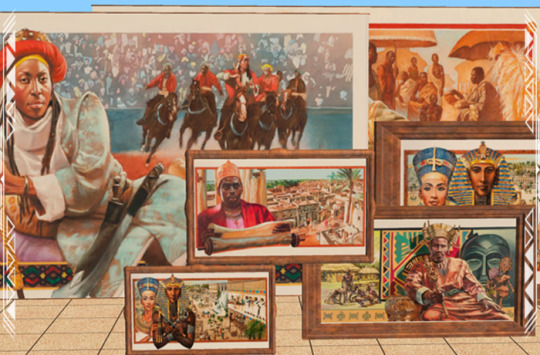
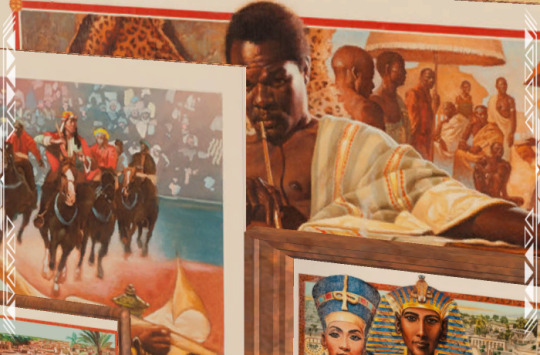
IMAGES
Akhenaton Pharaoh of Egypt (1375-1358 BC) by Barbara Higgins Bond
Alfonso I King of the Kongo (circa 1486-1543) by Carl Owens (1929-2002)
Askia Muhammaed Toure King of Songhay (1493-1529) by Leo Dillon
Benhanzin Hossu Bowelle—The King Shark (1841-1906) by Thomas Blackshear II
Cleopatra VII Queen of Egypt (69-30 BC) by Ann Marshall
Hannibal Ruler of Carthage (247-183 BC) by Charles Lilly
Hatshepsut The Ablest Queen of Far Antiquity (1503-1482 BC) by Dean Mitchell
Idris Alooma Sultan of Bornu (1580-1617) by Charles Lilly (1949-)
Ja Ja King of the Opobo (1821-1891) by Jonathan Knight
Khama III The Good King of Bechuanaland (1819-1923) by Carl Owens
Makeda Queen of Sheba (960 BC) by Debra Edgerton
Mansa Kankan Musa King of Mali (1306-1337) by Barbara Higgins Bond
Menelek II King of Kings of Abyssinia (1844-1913) by Dow Miller
Moshoeshoe King of Batsutoland (circa 1786-1870) by Jerry Pinkney
Mwana Ngana Ndumba Tembo—Ruler of the Angolan Tchokwe (1840-1880 circa) by Kenneth Calvert
Nandi Queen of Zululand (1778-1826 AD) by HM Rahsaan Fort II
Nefertari Nubian Queen of Egypt (192-1225 BC) by Steve Clay
Nehanda of Zimbabwe (1862-1898) by Lydia Thompson
Nzingha—Amazon Queen of Matambo (1582-1663) by Dorothy Carter
Osei Tutu King of Asante (circa 1650-1717) by Alfred Smith
Queen Amina of Zaria (1588-1589) by Floyd Cooper
Samory Toure The Black Napoleon of the Sudan (1830-1900) by Ezra Tucker
Shaka-King of the Zulus (1787-1828) by Paul Collins
Shamba Bolongongo African King of Peace (1600-1620) by Roy LaGrone
Sunni Ali Beer King of Songhay (circa 1442-1492) by Leo Dillon
Taharqa King of Nubia (710-664 BC) by John Thomas Biggers
Tenkamenin King of Ghana (1037-1075 AD) by Alexander Bostic
Thutmose III Pharaoh of Egypt (753-712 BC) by Antonio Wade
Tiye The Nubian Queen of Egypt (circa 1415-1340 BC) by Leonard Jenkins
Yaa Asantewa Queen of Ghana (1863-1923) by Barbara Higgins Bond CREDITS No copyright infringement intended – I own no rights to these images. Artwork and trademarks are the property of their respective creators and/or owners. If this exceeds fair use, please contact me via private message. Thanks: Simming and Sketchfab Communities. Sources: Any Color You Like (CuriousB, 2010), Beyno (Korn via BBFonts), Console Certificates (d_dgjdhh, 2019; 2011), EA/Maxis, Gyeongbokgung Sajeongjeon Painting (National Heritage Administration, 2024 via CCA; Sketchfab), Great Kings and Queens of Africa Series (Anheuser-Busch, Inc., 1975-2000; Kentake, 2016), Offuturistic Infographic (Freepik), Painting by Zdzislaw Beksinski (Sosnowski, 2018 via CCA), Yeti Metals (Shastakiss, 2017).
88 notes
·
View notes
Photo

Figurine of the Kushite Pharaoh Taharqa and the Falcon God Hemen Taharqa (𓇿𓉔𓃭𓈎) “t3-h-rw-q”, a 25th dynasty pharaoh 𓉐𓉼 “pr-ˁ3” ‘Great House’ of the “Kushite Empire”, is offering wine while he is on his knees. He is wearing the shendit 𓈙𓈖𓆓𓅱𓏏𓋯 “šnḏw.t” loincloth, headband, double uraeus 𓅜𓏏𓆘 “3ḫ.t” offering two jars of nu 𓏌, (in front); Hemen (falcon). He brandishes a erect uraeus on his forehead 𓏅𓈖𓏏𓂉 “ḫnt” skullcap. In Egyptian mythology, Hemen 𓎛𓏠𓈖𓁜 “ḥmn” was a falcon–god, worshipped 𓇼𓄿𓀃 “dw3” in Hefat, who was depicted during the Old Kingdom as slaying hippopotami 𓂧𓃀𓃯𓏪 “dbw” and other symbolic forces of chaos. Dimensions: Height: 19.7cm; Length: 26cm; Width: 10.3cm Material and technique Material: wood (wooden base), bronze (Taharqa), chloritite (Hemen) Secondary material: silver (wooden base veneer), gold (Hemen) 📸 @museelouvre 𓋹𓎬𓋹𓎬𓋹𓎬𓋹𓎬𓋹𓎬𓋹𓎬𓋹𓎬𓋹𓎬𓋹𓎬𓋹𓎬𓋹𓎬𓋹𓎬𓋹𓎬𓋹𓎬𓋹𓎬𓋹𓎬 @egyptologylessons 𓋹𓊽𓋴𓆖𓎛𓇳𓎛 © 𓊁𓊁𓊁𓊁𓊁𓊁𓊁𓊁𓊁𓊁𓊁𓊁𓊁𓊁𓊁𓊁𓊁 #Ancientegypt #ägypten #egyptology #egypte #egitto #埃及 #مصر #egipto #이집트 #taharqa #hemen #pharaoh #statuette #falcon #guilded #louvremuseum (at Louvre Museum Paris) https://www.instagram.com/p/CnzV1Wbu0l5/?igshid=NGJjMDIxMWI=
#ancientegypt#ägypten#egyptology#egypte#egitto#埃及#مصر#egipto#이집트#taharqa#hemen#pharaoh#statuette#falcon#guilded#louvremuseum
48 notes
·
View notes
Text
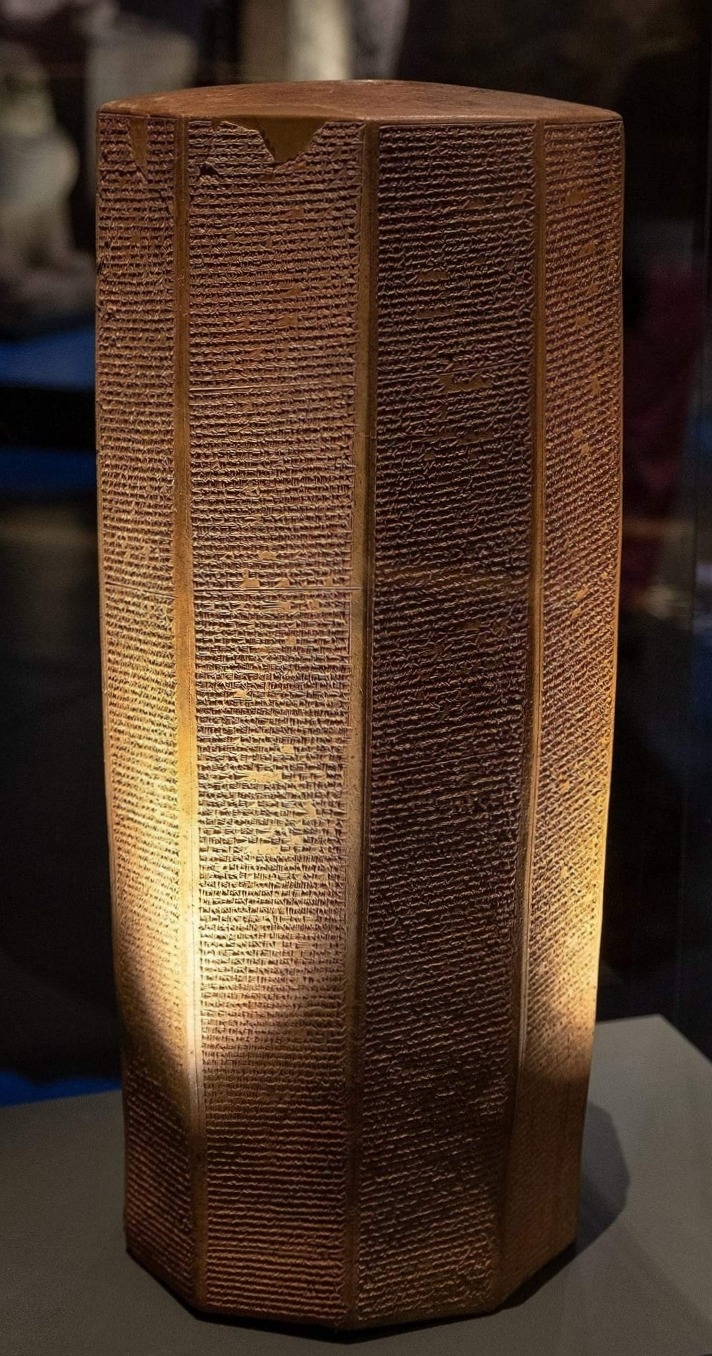
Rassam Cylinder, a ten-sided clay cylinder that was created in c. 643 BC, during the reign of King Ashurbanipal (c. 685 BC - 631 BC) who ruled the Neo-Assyrian Empire from 669 - 631 BC.
It was discovered in the ancient Assyrian city of Nineveh, near Mosul, present-day Iraq, by Hormuzd Rassam (3 October 1826 - 16 September 1910) in 1854.
In over 1,300 lines of cuneiform text, the cylinder records nine military campaigns of Ashurbanipal, including his wars with Egypt, Elam and his brother, Shamash-shum-ukin.
It also records his accession to the throne and his restoration of the Palace of Sennacherib.
The cylinder is the most complete chronicle on the life of Ashurbanipal.
There are some extracts from the cylinder below:
"I am Ashurbanipal, offspring of Ashur and Bêlit, the oldest prince of the royal harem, whose name Ashur and Sin, the lord of the tiara, have named for the kingship from earliest (lit., distant) days, whom they formed in his mother's womb, for the rulership of Assyria; whom Shamash, Adad and Ishtar, by their unalterable (lit., established) decree, have ordered to exercise sovereignty.
Esarhaddon, king of Assyria, the father who begot me, respected the word of Ashur and Bêlit-ilê (the Lady of the Gods), his tutelary (divinities), when they gave the command that I should exercise sovereignty.
In the month of Airu, in the month of Ea, the lord of mankind, the twelfth day, an auspicious day, the feast day of Gula, at the sublime command which Ashur, Bêlit, Sin, Shamash, Adad, Bêl, Nabû, Ishtar of Nineveh, Queen of Kidmuri, Ishtar of Arbela, Urta, Nergal, Nusku, uttered, he gathered together the people of Assyria, great and small, from the upper to (lit., and) lower sea.
That they would accept (lit., guard) my crown princeship, and later my kingship, he made them take an oath by the great gods, and so he strengthened the bonds (between them and me)....
By the order of the great gods, whose names I called upon, extolling their glory, who commanded that I should exercise sovereignty, assigned me the task of adorning their sanctuaries, assailed my opponents on my behalf, slew my enemies, the valiant hero, beloved of Ashur and Ishtar, scion of royalty, am I.
Egyptian Campaign:
"In my first campaign I marched against Magan, Meluhha, Taharqa, king of Egypt and Ethiopia, whom Esarhaddon, king of Assyria, the father who begot me, had defeated, and whose land he brought under his sway.
This same Taharqa forgot the might of Ashur, Ishtar and the other great gods, my lords, and put his trust upon his own power.
He turned against the kings and regents whom my own father had appointed in Egypt.
He entered and took residence in Memphis, the city which my own father had conquered and incorporated into Assyrian territory.
A swift courier came to Nineveh and reported to me.
At these deeds, my heart became enraged, my soul cried out. I raised my hands in prayer to Ashur and the Assyrian Ishtar.
I mustered my mighty forces, which Ashur and Ishtar had placed into my hands. Against Egypt and Ethiopia, I directed the march."
Rassam Cylinder records the reign of Ashurbanipal until c. 645 BC.
The latter years of his reign are poorly recorded, probably due to the fact that the Neo-Assyrian Empire was plagued with troubles.
One of Ashurbanipal's last known inscription reads:
"I cannot do away with the strife in my country and the dissensions in my family; disturbing scandals oppress me always.
Illness of mind and flesh bow me down; with cries of woe I bring my days to an end.
On the day of the city god, the day of the festival, I am wretched; death is seizing hold upon me, and bears me down..."
Rassam Cylinder is currently on display in the British Museum.
A truly remarkable, yet biased, insight into the reign of Ashurbanipal and the world in which he lived.
📷: © Anthony Huan
#Rassam Cylinder#King Ashurbanipal#Neo-Assyrian Empire#Nineveh#Hormuzd Rassam#clay cylinder#cuneiform text#Palace of Sennacherib#British Museum#Assyria#ancient civilizations#Iraq#assyriology#military campaigns#cuneiform cylinder#cuneiform#writing systems
55 notes
·
View notes
Text

sorry if this is morbid but damn what a shot (also fuck you for burying my ass in the desert and leaving me to die taharqa!!)
5 notes
·
View notes
Text
Not long after arriving in New York, Jimi met Lithofayne Pridgeon, his first Harlem girlfriend. Fayne, as she was known, was a beautiful African American woman who had grown up on the streets and at nineteen was already a Harlem fixture. “Fayne was a supergroupie,” said Taharqa, who would later marry her. “She had seen Otis Redding and James Brown; she knew all those guys.” Some called her “Apollo Fayne” because she was often backstage at the famous theater. On their first real date, Fayne took Jimi home to her mother’s house for a meal. Her mother loved to cook, and Jimi, who was nearly starving, needed to eat. Fayne would later write in an article for Gallery that she’d met Jimi at an orgy, though how he managed to get invited to something that exotic was never explained. Pridgeon found Jimi surprisingly old-fashioned: He frequently talked about his old high school girlfriend Betty Jean. -The Book; Room Full Of Mirrors.
3 notes
·
View notes
Text
Notable Black Pharaohs of the 25th Dynasty
Piye (Piye)
Reigned: Circa 747–716 BCE
Known for unifying Egypt and establishing the 25th Dynasty.
Shabaka (Shabaka)
Reigned: Circa 716–702 BCE
Noted for his military campaigns and for promoting the worship of the god Amun.
Taharqa
Reigned: Circa 690–664 BCE
Famous for his extensive building projects and defensive efforts against Assyrian invasions.
Tanutamun (Tanutamon)
Reigned: Circa 664–656 BCE
The last ruler of the 25th Dynasty, he faced significant challenges from the Assyrians.
Bakenrenef (Bakenrenef)
Reigned: Circa 725–715 BCE (co-regent with Piye)
Served as a prominent figure in the Nubian conquest of Egypt.
9 notes
·
View notes
Note
pls infodump about the kingdom of kush
I'll be honest, I learnt most of my stuff through late night wiki dives, but it's a fascinating thing.
For one thing, while it changed massively over time, the kingdom of Kush lasted for so many centuries, even with conflict from it's neighbours, the Egyptians and Assyrians.
The parts I think are fantastic are the 25th dynasty when they conquered Egypt and started building pyramids along the Nile. It wasn't a particularly peaceful time, but I love that they left their mark on the land there.

^ these were built in the time of Taharqa and after
Also the society had higher levels of woman involvement for the time. For instance the position Kandake was for the sister of the king as the bearer of the heir to the throne. This allowed for women to rule as Queen regents so to speak, and there are at least eleven of these such rulers in the kingdom of Kush.
They traded with the Romans, revolted against Roman taxes and outlasted then, which is fantastic in itself, even if the kingdom had moved further south in the continent at that point.
They used all sorts of ways to improve agriculture, including a type of water wheel called 'saqiyah' which helped to lift heavy amounts of water. Reservoirs were made all over the kingdom and some still remain to this day. Also they have some fantastic statues of their rulers.

^ Taharqa's the tall one at the back.
Honestly I'm still learning so much. I can't summarise a millennia of a kingdom in one excited garble of a post, and I am happy enough to just point and say 'Look! Ancient civilisations being super cool! Look at that!'
So thanks for the ask, and I hope this was alright :)
6 notes
·
View notes
Text
Today we will talk about a list and names of the kings of ancient Egypt. The first dynasty ruled from about 3150 to 2890 BC. M. It is the first dynasty of Egyptian kings who ruled Egypt after its unification (Upper and Lower Egypt) by Narmer, who ruled after him eight kings, the most famous of whom were (Hor Aha), (Jar) and (Jet), and Queen (Merit Nate), who is the first ruling queen in ancient history , and represents the beginning of the Egyptian historical eras.
The fourth was in Sudan, and Thebes (today called Luxor) was the capital of this empire, and there the greatest temples and the most magnificent tombs were built. This was followed by the era of the third decline, and it includes families 21-25 (about 1085-663 BC), in which kings of Libyan origin ruled the country, including Sheshonq, Yokuris, and others of Nubian origin, the most famous of whom was Yankhi. As the Assyrians invaded, the Egyptians revolted and liberated the country from their control under the leadership of Psamtik I, who founded the 26th Dynasty (about 663 - 529 BC) and returned Egypt to its strength and the Renaissance began. Then the Persians took over the country and some powerful personalities succeeded in expelling them, but they returned throughout the 27 Dynasties. 30. The history of the pharaohs ended when Alexander the Great invaded Egypt and expelled the Persians in 332 BC. And then it was ruled by the Greek pharaohs of the Ptolemaic dynasty. The rule of this family ended when Egypt became an independent Roman province in 30 BC.[1]
The dates provided in this listing are approximate. They are based primarily on the traditional chronology of ancient Egypt, mostly based on the Egypt Digital Universities Database [2] developed by the Petrie Museum of Egyptian Antiquities, but alternative dates taken from other sources can be noted separately......
Kings names.
👇
Ptolemy IV
Ptolemy VII
Emperor Trajan
Emperor Tiberius Caesar
Emperor Caracalla
The names of the ancient Egyptian pharaohs
Pharaonic queens of Egypt
Queen Hatshepsut
Queen Ahmose-Nefertari
Queen Nefertiti
Queen Nefertari
Queen T
Queen Tuya
Queen Twosret
Queen Cleopatra
Queen Ahmose Enhaby
Queen Meritamun
Princess Neferure
Egyptian pharaohs
Minister we will die
Architect Imhotep
Engineer Habu
Engineer Ham Iono
Binozem I
King Ptolemy VI
King Ramses X
King Amenhotep III
King Amenhotep II
King Ramses XI
King Ahmose I
King Amenhotep the First
King Userkaf
King Unas
King i
King Harihor
King Nectanebo II
King Nectanebo I
King Taharqa
King Mentuhotep I
King Mentuhotep II
(The secret of Maat-Ra) (Mary-Amun)
King Ramesses V (User Maatre) (Sakhr En Ra)
King Ramesses VI (Neb Maatre) (Mari Amen)
King Ramses VII (User Ma'at Ra) (Mari Amen)
King Ramesses VIII (User Maatre) (Brother to Believe)
King Ramesses IX (Neferkare) (Step en Ra)
King Sekhnakht (Merre Ra) (Wsu-Kheu Ra) (Step En Ra)
King Ramses X (News of Maat Ra) (Step En Ra)
King Ramses XI (of Maat-Re) (Step-En-Ptah)
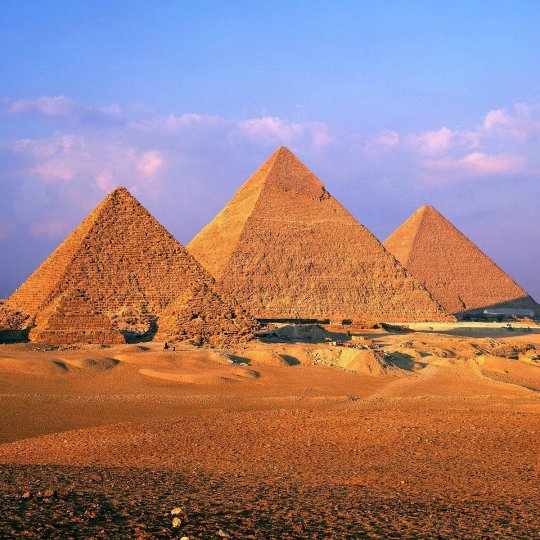
1 note
·
View note